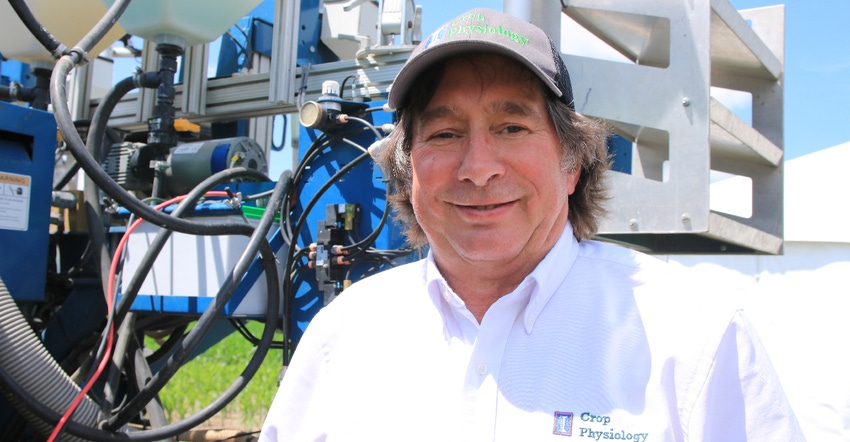
Farmers have compared 30-inch and 20-inch corn rows for years, but new research from the University of Illinois shows the winner depends on hybrid and weather. And one of those factors is easier to predict than the other.
U of I crop physiologist Fred Below and his graduate students conducted trials at three locations throughout Illinois: Yorkville, Champaign and Nashville. Weather in 2020 affected each site in dramatically different ways.
Related: Is 2019 making the case for narrow rows?
Trial data from the U of I shows that in 2020, the average yield benefit of narrow-row corn fell in much of the state compared to 2019. Below says conventional wisdom holds narrow rows work better in northern latitudes due to longer day lengths and shorter growing seasons. But his trial data shows southern Illinois also sees a yield benefit, especially in 2020.
Northern and central Illinois trial sites were hit by severe weather events this year. That meant the southern Illinois site in Nashville boasted the highest yields of all three sites.
Champaign. After suffering significant hail damage, the central Illinois site only had a 3-bushel average advantage for narrow rows, but eight of the 36 varieties tested had a 13-bushel advantage or better.
Yorkville. After derecho damage in August, the northern Illinois site had a 7-bushel penalty on narrow-row corn, but likewise, five varieties had a greater-than-12-bushel advantage. And one even had a 40-bushel advantage over 30-inch rows.
Nashville. The southern Illinois site had a 36-bushel advantage with narrow rows, and every single variety in the trial performed better in narrow rows.

Below says the hybrids that outperformed amid 2020’s inclement weather tended to have narrower leaves that were upright in their orientation.
“There’s huge genetic variation in the response to narrow rows, but those are the traits that work best when you have a high density,” Below says. “I’m a proponent that the future of corn is narrow rows, but it’s clearly hybrid-dependent, and somewhat location- and weather-dependent.”
While seed catalogs don’t carry ratings for leaf architecture, “they might indicate a hybrid’s response to density, and that’s a reasonable proxy,” he adds.
At Below’s Champaign test plot for narrow-row corn, there was heavy hail damage. Since narrow rows covered more ground during the July event, they endured more damage. North in Yorkville, derecho damage resulted in green snap. Below says narrow-row corn grows taller, so it caught the 80-mph wind that then sent plants falling harder.
“Some of our best hybrids are also prone to green snap,” Below says. “It was dry in August, too, and that didn’t help anywhere.”
While the Nashville site received 227% more rain than usual in August, the other locations were much drier during grain fill. There was 62% less rain than average at Champaign and 74% less than average at Yorkville.
Below says that with the “sweet spot” August conditions in Nashville, the 20% to 25% larger root system of narrow-row corn helped maximize yield potential. He concludes it’s not normal for narrow rows to achieve the 36-bushel advantage he observed in Nashville, “but with the right hybrid and weather, you can lead the pack.”
About the Author(s)
You May Also Like




